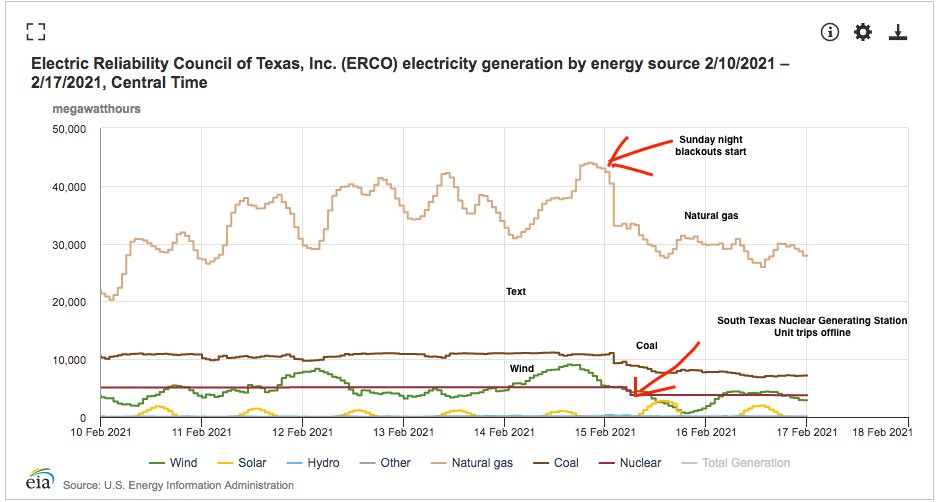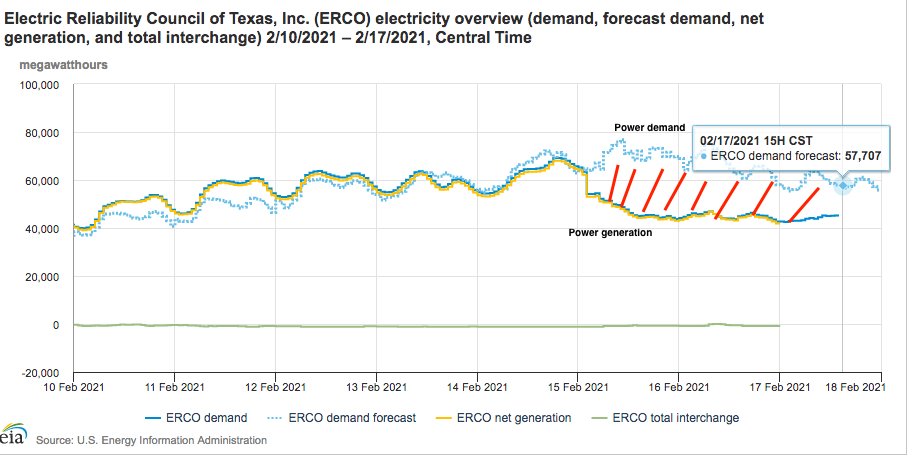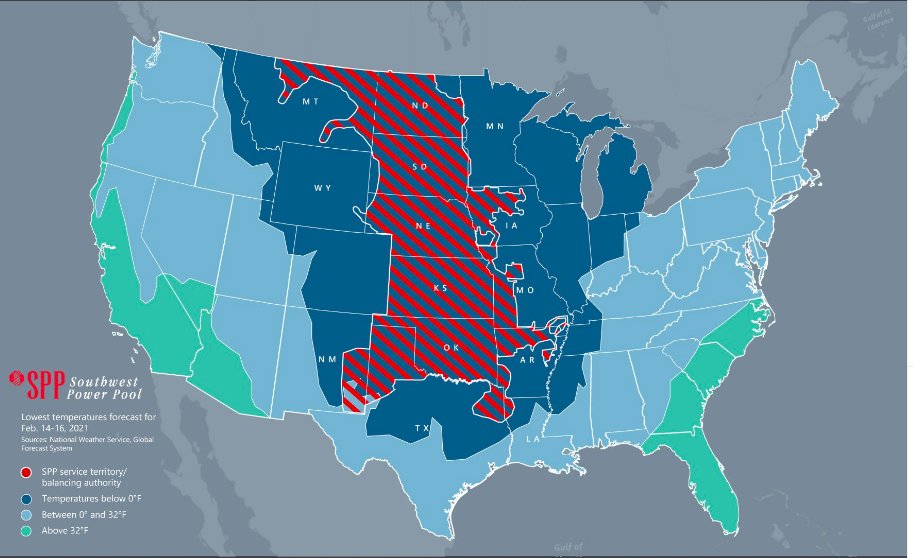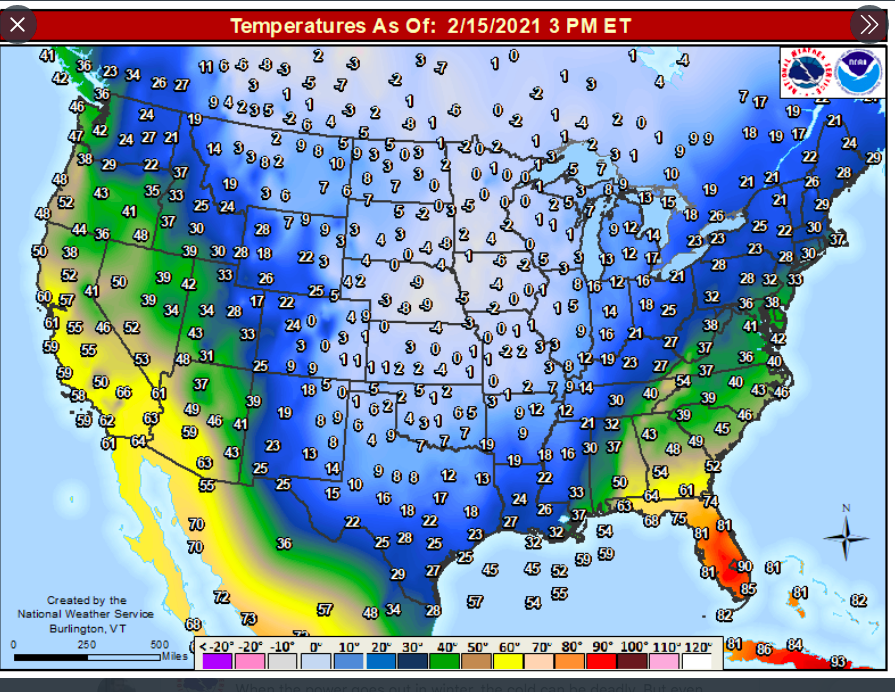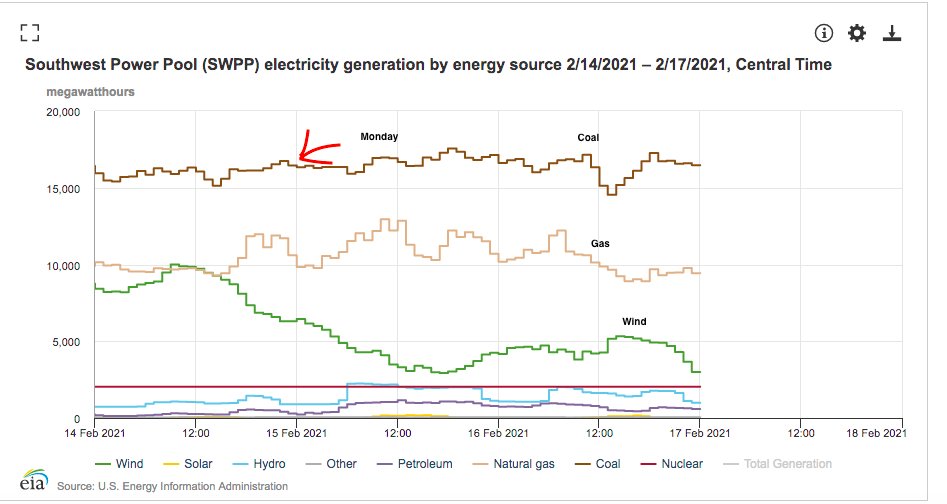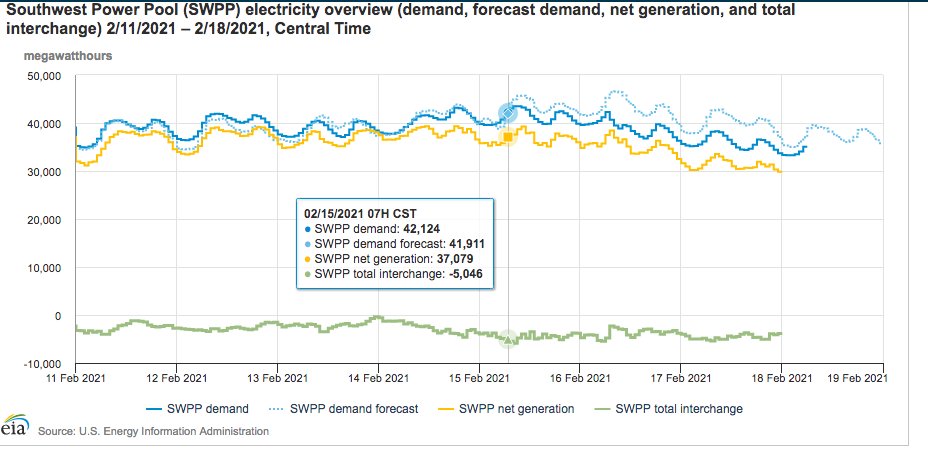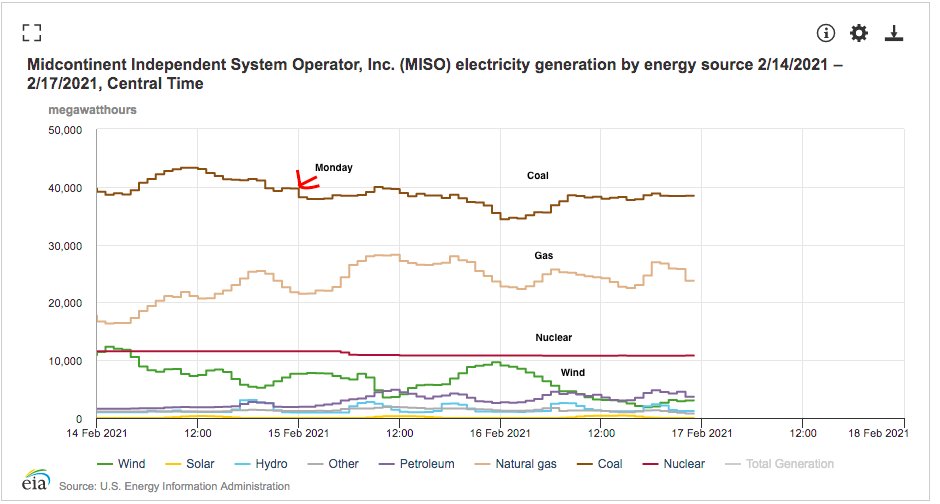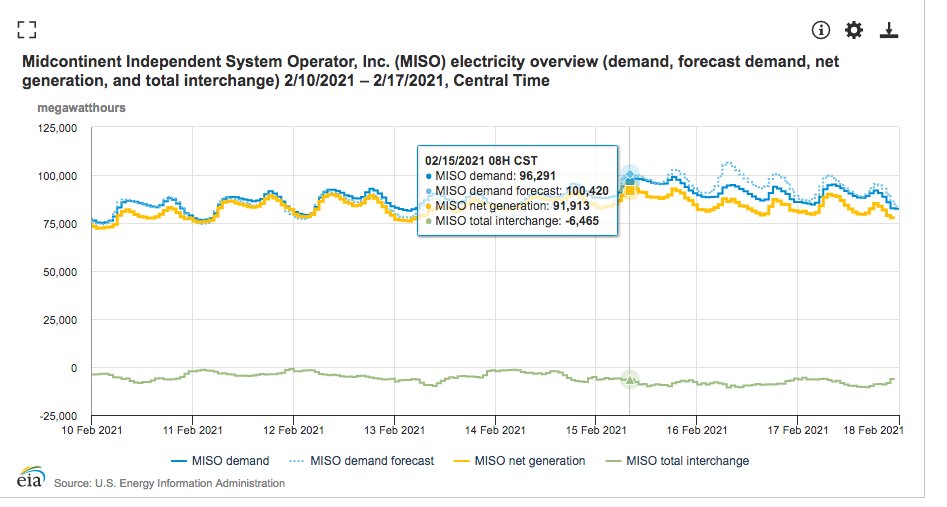I compared Texas to its neighboring power grids, which have also experienced bone chilling temperatures but have not struggled to the same degree.
The differences reveal a lot about what went wrong in Texas. https://www.eenews.net/stories/1063725375
The differences reveal a lot about what went wrong in Texas. https://www.eenews.net/stories/1063725375
You have probably heard many observers mention that this is a systemic failure rather than a breakdown of an individual technology like wind or gas.
That's easier to see visually. Note how all power generation falls of a cliff around midnight on Monday morning.
That's easier to see visually. Note how all power generation falls of a cliff around midnight on Monday morning.
You can see in this chart the result, a plunge in generation just as demand begins to soar. My crudely drawn red lawns represent the delta between generation and demand. At 7 a.m. Monday morning the difference was about 20GW.
Now lets compare the Southwest Power Pool. Before I show you the generation trends there, note this temperature map. It was colder in much of SPP than it was in Texas.
Here is the SPP generation map. Note:
1) Coal is providing more of the system's power, as a percent of generation.
2) Gas falls off, but rebounds pretty quickly and largely stabilizes.
3) Wind falls off, but is well within normal patterns. It's just not windy now
1) Coal is providing more of the system's power, as a percent of generation.
2) Gas falls off, but rebounds pretty quickly and largely stabilizes.
3) Wind falls off, but is well within normal patterns. It's just not windy now
Now let's look at SPP's supply and demand. Demand is much closer matched to generation, though demand still exceeds supply.
The gap is about 5 GW, but the difference is made up by imports.
The gap is about 5 GW, but the difference is made up by imports.
And MISO supply and demand on Monday morning. Like SPP, you see generation and demand pretty well matched with significant imports.
So what does this all mean? Like any major crisis, there are a variety of factors. But the biggest is pretty simple.
Texas, and power plants in the South in general, are not designed to handle cold like this.
Texas, and power plants in the South in general, are not designed to handle cold like this.
It's pretty telling that the blackouts that have occurred in MISO are in Entergy's Texas and Arkansas territory.
So big picture. No neither wind nor fossil fuels are to blame. These were power plants breaking down in conditions they were not designed to handle.
But there are lessons for the future, especially for efforts to decarbonize the grid.
But there are lessons for the future, especially for efforts to decarbonize the grid.
Renewable generation fades in much of the U.S. during the winter months. (Offshore wind in the northeast is an exception.)
That makes renewables ill suited for meeting winter demand peaks.
That makes renewables ill suited for meeting winter demand peaks.
One thing that comes through from talking with experts like @gilbeaq & @emilygrubert is were are going to have to expand our thinking in how to meet these challenges if we're going to achieve carbon free power
It's not just about pursuing clean generation, like advanced nuclear, hydro or CCS, though that is a piece of the puzzle.
It's also thinking a lot about demand. How can we make buildings more efficient, for example, to reduce stress on the grid.
It's also thinking a lot about demand. How can we make buildings more efficient, for example, to reduce stress on the grid.

 Read on Twitter
Read on Twitter